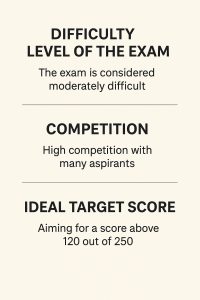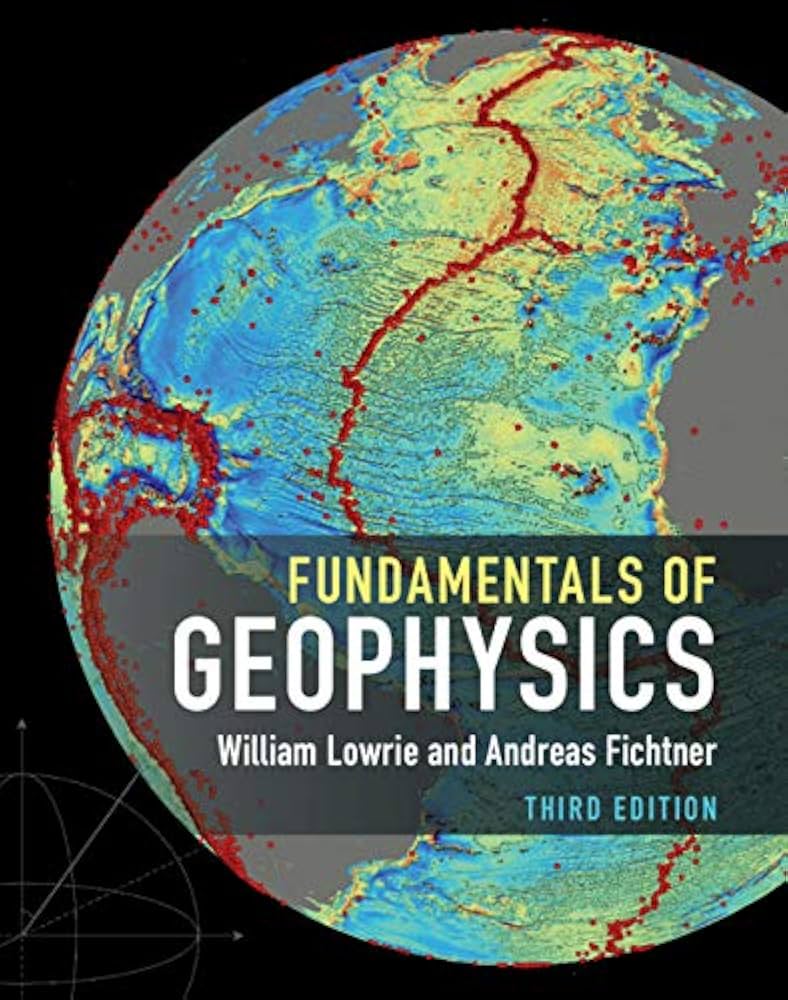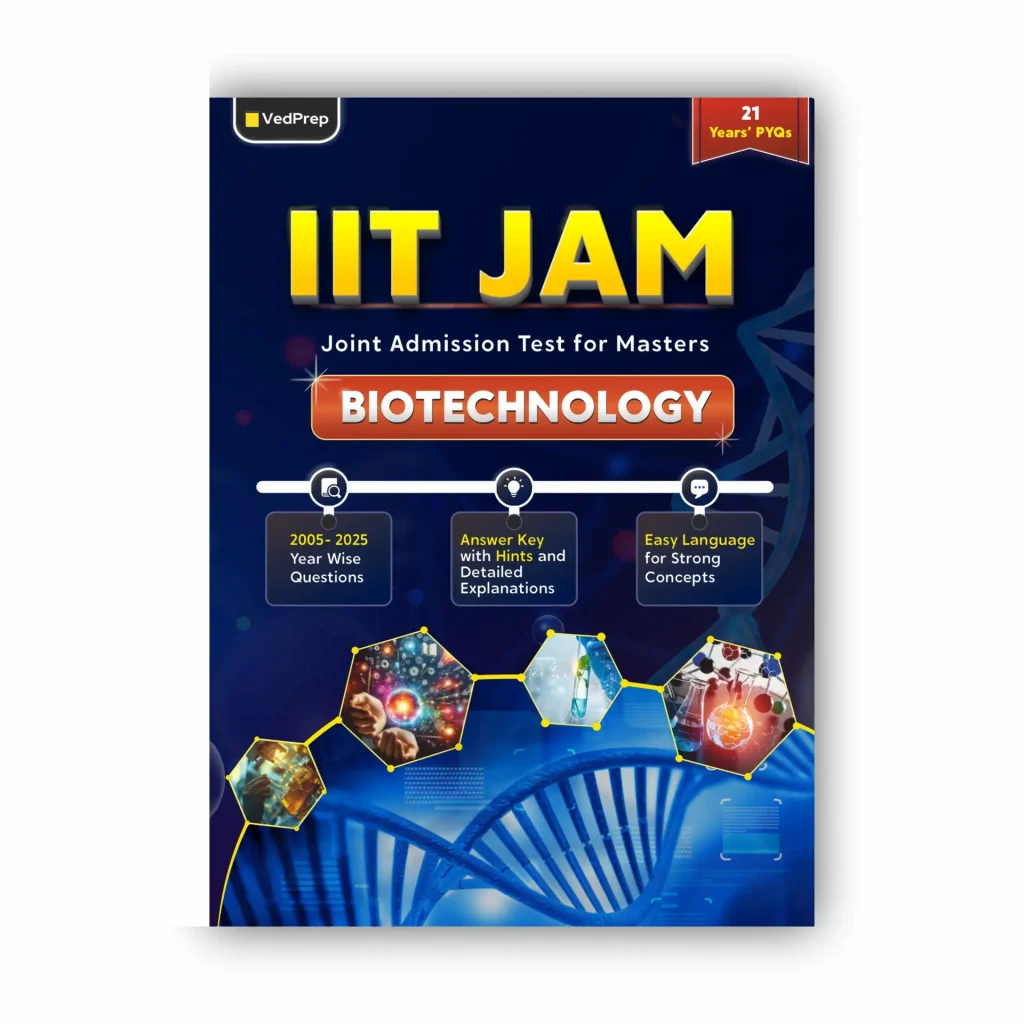If you are searching for how to prepare for CSIR NET Earth Science Preparation, the first step is to follow a well-structured plan and stay consistent with your studies. With the right strategy, aspirants can avoid unnecessary confusion and develop a strong command over the subject. Below are the key preparation tips every candidate must follow for the CSIR NET Earth Sciences exam:
CSIR UGC NET About
The Joint CSIR UGC NET exam is one of the most prestigious national-level examinations for candidates aspiring to build a career in research or teaching. Conducted biannually by the National Testing Agency (NTA) on behalf of CSIR and UGC, this exam evaluates candidates in five major science subjects, including Earth Sciences.
If you are preparing for the CSIR NET Earth Science exam, this guide will walk you through the most effective tips and strategies to help you score above the cutoff and crack the exam with confidence.
CSIR NET Earth Science Preparation Exam Pattern Details
Understanding the exam pattern is a crucial part of effective preparation. One of the most important How to prepare for CSIR NET Earth Science preparation tips is to be completely familiar with the structure of the question paper. The exam format helps you plan your time, choose the right questions, and avoid unnecessary mistakes.
Exam Pattern Overview
| Particulars | Details |
| Mode of Examination | Computer-Based Test (CBT) |
| Duration | 3 hours (180 minutes) |
| Language | English and Hindi |
| Total Number of Questions | 150 |
| Total Marks | 200 |
| Type of Questions | Objective/Multiple-Choice Questions |
| Negative Marking | Part A & B: 25% deduction |
| Part C: 33% deduction |
This detailed pattern helps candidates understand how marks are distributed and what to expect during the actual examination.
CSIR NET Earth Science Preparation Topics Overview
Earth Science questions are divided between Part B and Part C, both of which test conceptual clarity, analytical skills, and problem-solving techniques.
Key Topics Covered in the Exam
To prepare well, candidates must focus on the following core areas:
- Geophysics
- Oceanography
- Petrology
- Mineralogy
- Geochemistry
- Atmospheric Science
- Sedimentology
- Stratigraphy
These subjects form the backbone of the CSIR NET Earth Science syllabus and require thorough understanding.
Negative Marking in CSIR NET Earth Science
While attempting the paper, candidates must remember the negative marking scheme:
- Part B: –0.5 marks for each wrong answer
- Part C: –1.32 marks for each wrong answer
Understanding this marking structure helps you approach the exam strategically and avoid unnecessary guesswork.
CSIR NET Earth Science Preparation Tips
If you aim to qualify as a Junior Research Fellow (JRF) or Assistant Professor in Earth Science, it is essential to follow smart and structured How to prepare for CSIR NET Earth Science preparation tips. A strategic approach not only boosts your confidence but also increases your chances of clearing the exam with a high score. Below are some of the most effective tips on how to prepare for the CSIR NET Earth Science exam.
Understand the CSIR NET Earth Science Syllabus Thoroughly
- Your preparation begins with a complete understanding of the CSIR NET Earth Science syllabus.
The syllabus clearly outlines all the topics from which questions may appear in the exam. Since the exam covers a wide range of subjects Geophysics, Petrology, Atmosphere, Oceanography, Mineralogy, Sedimentology, and more it is important to study each topic in detail. - A strong command of the syllabus ensures that you do not miss any important area and helps establish the conceptual foundation needed to qualify for JRF or Assistant Professor roles.
Become Familiar with the Exam Pattern
One of the most crucial CSIR NET Earth Science preparation tips is understanding the exam pattern thoroughly.
The exam pattern helps you know:
- Number of questions
- Difficulty level
- Marking scheme
- Weightage of each section
- Time management needs
Knowing the structure of the CSIR NET Earth Science paper prepares you mentally and academically to face the actual exam with confidence.
CSIR NET Earth Science Marking Scheme
A clear understanding of the marking scheme is one of the most important how to prepare CSIR NET Earth Science preparation tips. Knowing how marks are awarded and deducted helps you attempt the paper with better accuracy and strategy.
The CSIR NET Earth Science paper is divided into Part A, Part B, and Part C, each carrying a different weightage. Below is the detailed marking structure:
Marking Scheme for CSIR NET Earth Science
| Particulars | Part A | Part B | Part C | Total |
| Total Questions | 20 | 50 | 80 | 150 |
| Maximum Questions to Attempt | 15 | 35 | 25 | 75 |
| Marks for Correct Answer | +2 | +2 | +4 | — |
| Maximum Marks | 30 | 70 | 100 | 200 |
| Negative Marking | –0.5 | –0.5 | –1.32 | — |
Why This Matters for Your Preparation
- Part C carries the highest weightage, so mastering analytical and concept-based questions is essential.
- Negative marking is higher in Part C, making accuracy more important than guesswork.
- Attempt only those questions you are confident about to avoid losing marks.
A well-planned approach based on the marking scheme can significantly improve your overall score.

Best Books for CSIR NET Earth Science Preparation
Books are the primary and most reliable source of knowledge for students preparing for this exam. Choosing the right study material is one of the most crucial. how to prepare for CSIR NET Earth Science Preparation tips, as the quality of books directly impacts your understanding and final score.
The recommended CSIR NET Earth Science books cover the syllabus as per the latest guidelines and help build strong conceptual clarity. While studying, candidates should make concise notes, highlight important points, and revise regularly. High-weightage topics such as Geomorphology, Geophysics, Petrology, Mineralogy, and Structural Geology must be studied thoroughly.
Highly Recommended Books for CSIR NET Earth Science
- Principles of Geomorphology – W. D. Thornbury
- Fundamentals of Geophysics – William Lowrie & Andreas Fichtner
- Structural Geology – Haakon Fossen
- Manual of Mineralogy – Hurlbut & Klein
These books provide conceptual depth, diagrams, examples, and numerical problems essential for scoring well in both Part B and Part C of the exam.

CSIR NET Earth Science Topic-Wise Weightage
Understanding topic-wise weightage is another important part of CSIR NET Earth Science preparation tips. Knowing which topics carry more questions helps candidates prioritize their study plan and allocate time wisely.
Part A: General Aptitude
| Topic / Unit | Weightage |
| Logical Reasoning | 20% |
| Numerical Ability | 20% |
| Graph Interpretation | 15% |
| Data Interpretation | 15% |
| Algebra & Arithmetic | 10% |
| Geometry & Mensuration | 10% |
| Series & Pattern Recognition | 10% |
Part B & C: Earth Science
| Topic / Unit | Part B (%) | Part C (%) |
| Geology | 30% | 35% |
| Geophysics | 20% | 20% |
| Meteorology | 15% | 10% |
| Oceanography | 10% | 10% |
| Atmospheric Science | 10% | 10% |
| Environmental Earth Science | 10% | 10% |
| Planetary Sciences | 5% | 5% |
Additional CSIR NET Earth Science Preparation Tips
Practice and Learn with Diagrams & Graphs
CSIR NET Earth Science preparation is incomplete without mastering diagrams and graphical representations. A significant number of questions in the exam are based on interpretation of graphs, phase diagrams, plots, and geological illustrations.
Understanding diagrams not only strengthens conceptual clarity but also improves accuracy in the exam.
Topics Where Diagrams Are Essential:
- Igneous & Metamorphic Petrology (Phase diagrams like binary eutectic, ternary systems)
- Sedimentology (Hjulström diagram, phase relations, grain size charts)
- Oceanography & Atmospheric Sciences (TS diagrams, thermocline, lapse rate graphs, Walker circulation)
- Micropaleontology (Morphology sketches, chamber arrangements)
- Geophysics (Travel-time curves, Bouguer anomaly graphs)
- Mineralogy (Crystal systems, stereographic projections)
- Structural Geology (Mohr circle, stress/strain graphs, fold geometry)
- Geochemistry (Spider diagrams, REE patterns)
Mastering these visual tools gives a strong edge in solving both Part B and Part C questions.
Practice Numerical Problems Regularly
Numerical questions carry high weightage, especially in Part C. Regular practice is essential to increase speed and accuracy.
Important Numerical-Based Topics:
- Geophysics (gravity, magnetics, seismic refraction/reflection)
- Structural Geology (dip, strike, true thickness, apparent dip)
- Isostasy (Airy & Pratt models)
- Petrology (thermodynamic calculations, phase rule)
- Geochemistry (distribution coefficients, radiometric dating)
Numerical questions often appear straightforward but require conceptual clarity and careful calculation to avoid negative marking.
Solve CSIR NET Earth Science Previous Year Papers
This is one of the most effective preparation strategies.
Benefits of PYQs:
- Understand the pattern of questions.
- Identify high-weightage topics.
- Learn how conceptual and numerical questions are framed.
- Recognize repeated themes.
- Improve time management.
- Analyzing previous papers also helps estimate the exam difficulty and builds confidence.
CSIR NET Previous Year Question Papers PDF Download
Here is a list of CSIR NET previous year question papers available for download Earth Sciences from various shifts and years.
| CSIR NET Previous Year Question Papers Earth Sciences PDF (2024) | ||
| Subjects | Exam Shift | Download Link |
| Earth Science | Shift 1 | PDF Download |
| Shift 1 | PDF Download | |
| Shift 1 | PDF Download | |
| CSIR NET Previous Year Question Papers PDF Earth Sciences (2023) | ||
| Subjects | Exam Shift | Download Link |
| Earth Science | Shift 2 | PDF Download |
| CSIR NET Previous Year Question Papers PDF Earth Sciences (2022) | ||
| Subjects | Exam Shift | Download Link |
| Earth Science | Shift 1 | PDF Download |
| CSIR NET Previous Year Question Papers PDF Earth Sciences (2019) | |
| Subject | PDF Download |
| Earth Sciences | PDF Download |
| CSIR NET Previous Year Question Papers PDF Earth Sciences (2018) | ||
| Subjects | PDF Download Link | |
| Earth Science | SET A | PDF Download |
| SET B | PDF Download | |
| SET C | PDF Download | |
Take CSIR NET Earth Science Mock Tests
After completing the syllabus, mock tests become crucial. They help you:
- Evaluate your strengths and weaknesses
- Practice time-bound answering
- Improve accuracy
- Build exam temperament
- Revise the entire syllabus in a structured format
Mock tests must be attempted regularly during the final 45–60 days.
CSIR NET Earth Science Coaching
Not all aspirants can grasp every concept solely through books or self-study. Coaching can be helpful when:
- Concepts are unclear
- You need expert guidance
- You require structured study material
- You prefer classroom learning or test-series discipline
Coaching is optional, but a good mentor can significantly boost your preparation.
CSIR NET Earth Science Cutoff Trends
Understanding previous year cutoffs helps estimate:

Candidates must aim to score above the cutoff to secure a position in the JRF or Assistant Professor category.
CSIR NET Earth Science Cutoff Previous Year – Category-wise %
| Post | UR | EWS | OBC | SC | ST | PwD |
| Junior Research Fellow (JRF) | 60.29% | 55.45% | 53.79% | 48.04% | 45.74% | 32.33% |
| Assistant Professor (AP) | 54.261% | 49.905% | 48.411% | 43.236% | 41.166% | 29.097% |
Revise by Writing the Concepts Down
Revision plays a crucial role in cracking the CSIR NET Earth Science exam, especially for theory-heavy topics such as Mineralogy, Oceanography, Atmosphere, Geomorphology, and more. These subjects require strong memorization skills, and the best way to retain information is through active writing.
Instead of only reading from books, candidates should write down important definitions, classifications, diagrams, and processes during study sessions as well as while revising. This technique strengthens memory recall and helps in quick revision before the exam.
Create a Smart Study Plan for CSIR NET Earth Science Preparation
A well-structured study plan is one of the most valuable CSIR NET Earth Science preparation tips. Every candidate’s strengths and weaknesses are different, so the study plan must be personalized, realistic, and aligned with the exam syllabus.
While creating your study routine, make sure to include all the preparation essentials discussed above PYQs, mock tests, topic-wise weightage, numerical practice, and reading standard books.
Give special attention to high-scoring and frequently asked subjects such as:
- Oceanography
- Structural Geology
- Geomorphology
- Geophysics
- Atmospheric Sciences
Ideally, students require 90–100 days to properly cover and revise the complete syllabus at least once. Divide your time into learning, practising, testing, and revision phases for maximum efficiency.
Take Good Care of Your Health
Preparing for CSIR NET Earth Science requires long study hours and constant mental focus, which is only possible with a healthy mind and body. Ensure that you:
- Eat regular, nutritious meals
- Sleep adequately
- Stay hydrated
- Take short breaks during study sessions
Ignoring your health often leads to fatigue, poor concentration, and reduced productivity, ultimately affecting your preparation quality. A balanced lifestyle will help you stay consistent and perform better in the final exam.
90-Day CSIR NET Earth Science Study Plan
Your ultimate 90-day strategy to score high in CSIR NET Earth Science.
PHASE 1 — Core Learning (Day 1–50)
| Week | Days | Topics to Study | Daily Tasks / Goals |
| Week 1 | 1–7 | Mineralogy (crystals, optical properties), Basics of geology | Make handwritten notes; practise diagrams; solve 15 PYQs |
| Week 2 | 8–14 | Petrology (igneous, sedimentary, metamorphic), Geochemistry basics | Revise textures & structures; 20 PYQs practice |
| Week 3 | 15–21 | Seismology (waves, travel time curves), Earth structure | 1 hr numerical practice daily; solve 15–20 PYQs |
| Week 4 | 22–28 | Gravity & Magnetic Methods, Structural Geology (faults, folds) | Stereonet basics; diagrams; solve 20 PYQs |
| Week 5 | 29–35 | Oceanography (circulation, waves, tides), Marine sediments | Make flowcharts; revise bathymetry; 15 PYQs |
| Week 6 | 36–42 | Atmospheric Sciences (winds, monsoon, weather systems) | Atmospheric diagrams; revise ozone, jet streams; 15 PYQs |
| Week 7 | 43–50 | Geomorphology (aeolian, fluvial, glacial), Remote Sensing & GIS | Draw landform sketches; revise sensors; 20 PYQs |
PHASE 2 — Practice + PYQs (Day 51–75)
| Week | Days | Focus Area | Daily Tasks / Goals |
| Week 8 | 51–57 | Numerical Practice + Concept Revision | Seismology, gravity, oceanography numericals; 1 unit test every 3 days |
| Week 9 | 58–64 | PYQs (Last 10 years) | Solve 70–100 PYQs this week; analyse weak areas |
| Week 10 | 65–71 | Mixed Topic Tests | Attempt 3 mixed mock tests; revise short notes |
| Week 11 | 72–75 | Advanced Revision | Revise Structural, Oceanography, Atmosphere; 20 mixed questions/day |
PHASE 3 — Final Revision (Day 76–90)
| Week | Days | Focus Area | Daily Tasks / Goals |
| Week 12 | 76–82 | Full-Length Mock Tests | Attempt 5–6 full mocks; analyse mistakes same day |
| Week 13 | 83–88 | Final Revision | Revise all notes; revise formulas; solve 20–25 mixed MCQs/day |
| Last 2 Days | 89–90 | Light Revision Only | Do not study new topics; stay relaxed; revise formulas & diagrams only |
How to prepare for CSIR NET earth Science Preparation FAQs
How can I qualify for the CSIR NET Earth Science exam in the very first attempt?
Success in the first attempt is achievable by mastering the syllabus, prioritising important topics, solving past papers, taking mock exams regularly, and revising consistently.
What are the top preparation techniques for the CSIR NET Earth Science exam?
Effective strategies include building strong conceptual clarity, practising numerical problems, studying diagrams, analysing previous papers, and following a well-structured timetable.
Where can I download practice sets or model papers for CSIR NET Earth Science?
Model question papers are available on the official NTA/CSIR website or through reputable coaching institutes that publish updated practice materials.
What are the high-scoring areas in the CSIR NET Earth Science syllabus?
Important sections include Structural Geology, Geophysics, Oceanography, Atmospheric Sciences, Sedimentology, Mineralogy, Petrology, and Geomorphology.
How difficult was the CSIR NET Earth Science exam conducted in January 2022?
The January 2022 exam was moderately tough, with Part C containing challenging analytical and numerical questions.
Do CSIR NET Earth Science mock exams actually help in revising the whole syllabus?
Yes, mock tests are highly effective for revision as they enhance speed, accuracy, and familiarity with the exam pattern.















